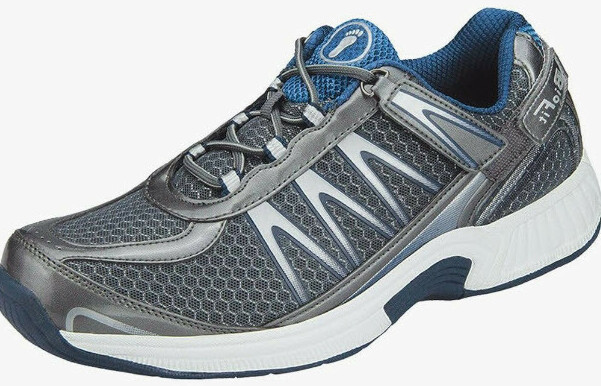
If you’re managing diabetes, you’re going to find out about a lot of different health aspects to keep track of.
Foot health might not be the first thing on your mind, but it’s a crucial part of diabetes care. You see, diabetes can lead to significant foot problems, often due to two major complications: nerve damage (neuropathy) and poor circulation. When these issues kick in, even a small cut or blister can spiral into a severe infection or ulcer if left unnoticed or untreated.
Now, why is good foot care so essential in diabetes management? High blood sugar levels can damage blood vessels, reducing blood flow to the feet. That means less oxygen and nutrients reaching those areas, making healing slower and infections more likely. Plus, nerve damage means you might not feel injuries when they happen, leading to worse problems down the road.
Ignoring foot health can have serious consequences for someone with diabetes. Let’s say a minor foot injury doesn’t get the attention it needs; it could develop into an ulcer or severe infection. And in the worst cases, this can lead to hospital stays, more complex treatments or even the risk of amputation. That’s why preventing these issues is key – and that’s where orthopedic shoes step in (no pun intended). They’re not just about comfort; they’re tailored to address the specific risks that people with diabetes face.
Anatomy of Orthopedic Shoes and Their Benefits
I’m going to break down what exactly makes orthopedic shoes so special, especially for those managing diabetes. These aren’t your run-of-the-mill kicks; orthopedic shoes are designed with a purpose. They’re tailored to cushion and support your feet in a way that regular shoes don’t. Think of them as custom care for your feet.
You’re going to find out about features like wider toe boxes that reduce pressure on the toes, materials that conform to the shape of the foot preventing blisters, and soles designed to absorb shock, protecting your feet with every step.
This isn’t just about comfort; it’s about stability and protection. With diabetes, your feet need all the help they can get to stay healthy. Orthopedic shoes can reduce the risk of foot sores and bone and joint damage. It’s like having a personal bodyguard for your feet.
What sets orthopedic shoes apart from regular shoes you ask? It’s in how they manage pressure distribution. Diabetic feet are prone to more complications, which means they need more specialized care. Orthopedic shoes do just that by ensuring that no part of the foot is taking more strain than it should.
From Prevention to Treatment: Orthopedic Shoes in Diabetic Foot Care
 You might be asking yourself, how exactly do orthopedic shoes fend off those nasty complications that can come with diabetes? Well, it’s about prevention just as much as it is about treatment. Orthopedic shoes are specially designed to redistribute weight, reduce pressure points, and increase stability. This drastically cuts down the chances of developing sores and ulcers which, trust me, you want to avoid.
You might be asking yourself, how exactly do orthopedic shoes fend off those nasty complications that can come with diabetes? Well, it’s about prevention just as much as it is about treatment. Orthopedic shoes are specially designed to redistribute weight, reduce pressure points, and increase stability. This drastically cuts down the chances of developing sores and ulcers which, trust me, you want to avoid.
But let’s say you already have some foot issues; it’s not the end of the world. Orthopedic shoes aren’t just preventative gear; they are a key player in treatment too. A properly fitted pair provides the support needed to allow an existing condition to heal while you stay active. They can also correct gait abnormalities that might contribute to the worsening of foot conditions over time.
Now, you don’t have to take my word for it. The proof is in the pudding, or in this case, in the growing body of case studies and personal stories from individuals with diabetes who’ve experienced dramatic improvements with the right footwear. For instance, Johnny Walker (and yes, that’s his real name) was a marathon runner diagnosed with diabetes who thought his running days were over until orthopedic shoes got him back on track.
With these experiences in mind, I’m going to lead you right into what you’re probably pondering by now: how to pick the perfect pair of orthopedic shoes. You’ll want to ensure you’re getting what your feet truly need, not just what looks good. Stick with me, and in this next part, I’m going to equip you with some golden rules for selecting orthopedic footwear that could make a world of difference for your foot health.
Choosing the Right Orthopedic Footwear for Optimal Diabetes Foot Care
Selecting the right shoes is crucial, especially when you’re managing diabetes. Before you grab a pair off the shelf, you should know that proper fitting is paramount. Ill-fitting shoes can lead to blisters, sores, and worse.
Getting the right fit might mean seeking professional help. Don’t worry too much about this step; a podiatrist can recommend shoes that cater to the unique shape and needs of your feet. And trust me, it’s worth it for the health of your feet.
You might be thinking, ‘But what if I find something comfortable?’ Comfort is a good start, but look for specific features like a deep toe box, cushioned insoles, and non-binding uppers. These details make orthopedic shoes a strong ally in diabetic foot care.
Remember, these shoes are part of your daily life. Choose something that resonates with you, not just functionally, but aesthetically too. Fortunately, orthopedic shoe designs have come a long way from the clinical styles of the past.
Lastly, proper care and timely replacement of your orthopedic shoes significantly extend their life and effectiveness. Look for signs of wear and remember, your first pair isn’t going to be your last. Your feet change over time, and so should your shoes.
